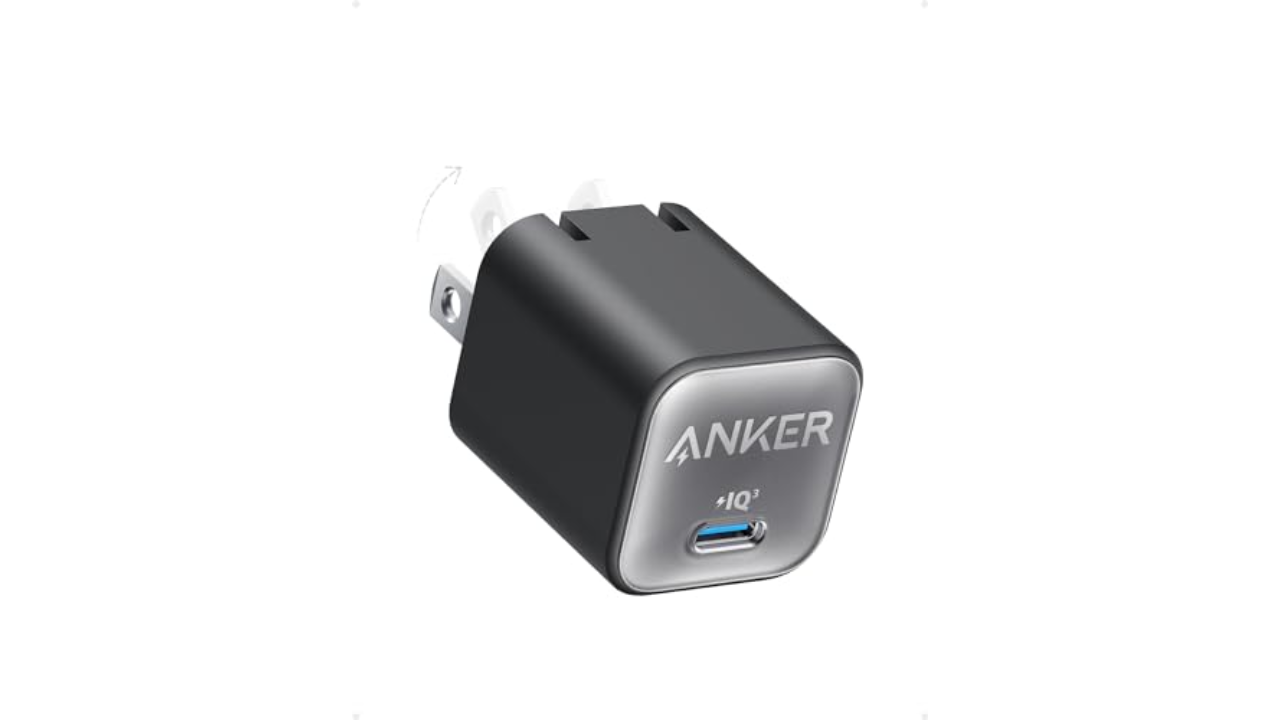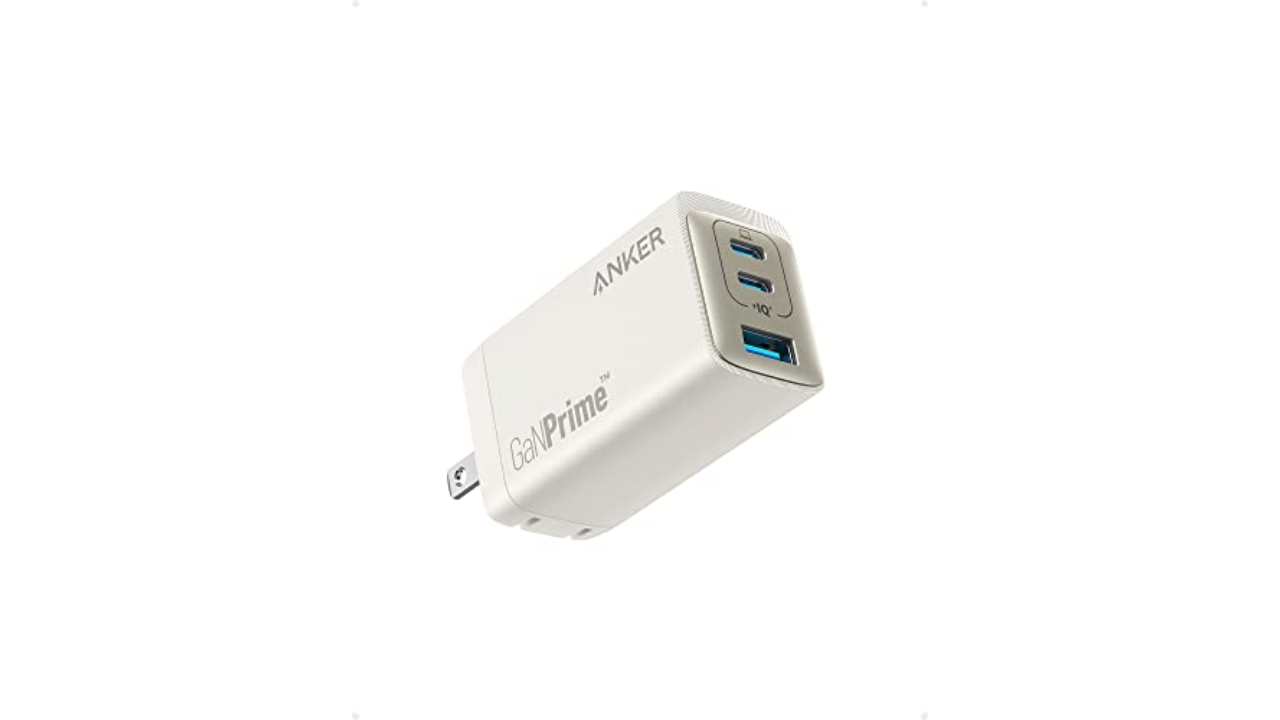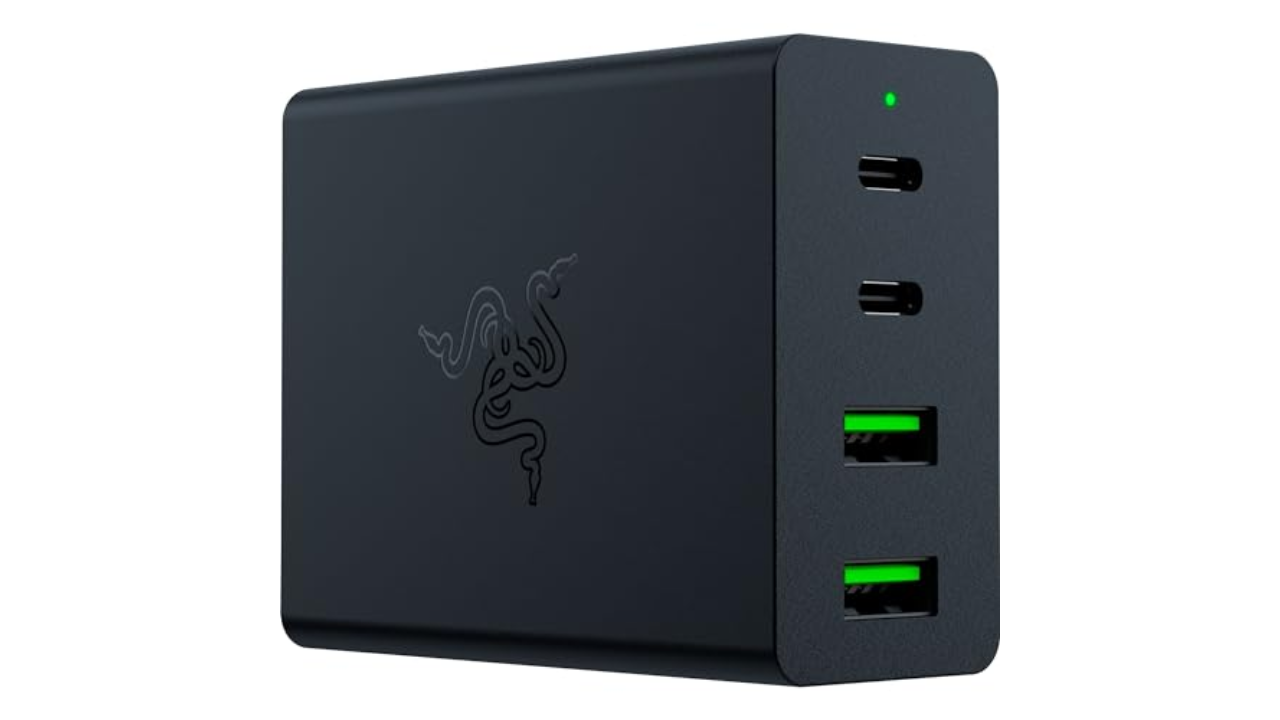Engadget has been testing and reviewing consumer tech since 2004. Our stories may include affiliate links; if you buy something through a link, we may earn a commission. Read more about how we evaluate products.
The best fast chargers for 2024
We tested 14 different USB phone chargers on five different devices. Here are the results.
Choosing the best fast charger might not have been much of a consideration back in the days when we had the luxury of enjoying a charger bundled with our new phones. But now, with most phones barely coming with a USB cable (if you’re lucky), it’s time to consider what charger is right for you. And with most newer devices including phones, laptops and tablets supporting USB-C charging, there’s a high chance you can invest in a fast charger that can cater to all of your device’s charging needs. If you’re a frequent traveler, this is a huge benefit, as the last thing you want to do is lug around multiple chargers when you’re trying to travel light.
Fast chargers come in all shapes and sizes — some are more powerful than others, so you’ll want to find one that will suit all of your devices. You can check how much power your devices need (in watts) in their manuals or on the manufacturer’s website. Be sure to make a note of it, however, as some phones like those from OnePlus can support up to 120W. Similarly, some devices like OPPO’s SuperVOOC require proprietary protocols, so only first-party chargers will work. Whatever you need, our list of the best fast chargers should cover any situation.
Editor's Note (June 2024): While we’re still waiting for more new chargers to come out so we can do a full update to our guide, some appealing options have hit the market recently. At the end of March, Pluggable announced a super slim two-port 40W USB-C adapter that seems like a great travel companion for keeping a phone and a tablet topped up simultaneously. One neat feature is its smart power allocation tech, which allows the charger to dynamically shift how much juice each device gets to best maximize efficiency.
Meanwhile, for those looking for something beefier, UGreen released an entire new line of devices with enticing specs. The most notable of these is a 160-watt GaN charger, featuring four ports (three USB-C and one USB-A) that can split power output between multiple devices at once or charge one laptop at up to 140 watts. This gives UGreen’s brick a ton of flexibility while still being able to refill even a beefy 16-inch MacBook Pro at top speed. Alternatively, Satechi’s latest 145w charger offers similar (though slightly lower) power output and comes with an assortment of international plug adapters, which could be a real luxury for frequent travelers. But perhaps most importantly, both of these devices cost $40 to $50 less than our current favorite high-wattage charger (Razer’s 130W GaN adapter), so we’re looking forward to testing these out in more depth soon.
Anker 511 USB-C GaN 30W Charger
Best 30-watt charger
Anker 735 Charger GaN Prime 65W
Best 65-watt charger
Razer USB-C 130W GaN Charger
Best 100-watt and up charger
How we tested fast chargers
The methodology for my fast charging experiment is intended to be as straightforward as possible. I drained each device to 10 percent battery, plugged in a power brick and then recorded the amount of charge added every 10 minutes for an hour. Each adapter was plugged directly into a standard 120-volt outlet (without the use of a power strip or any extension cords), and when possible I used the cable that either came included with the battery charger or one made by the same manufacturer as the device. If that wasn’t an option, I used certified 100-watt USB-C cables made by Anker, Apple and others.
Because the charging rate for devices varies depending on how much juice you have, I wanted to measure how well each adapter was able to match each gadget’s optimal charging speed. Generally, charging is slower between zero and 20 percent before speeds ramp up until the battery hits 80 percent, at which point things slow down again to protect and preserve the health and longevity of the power cell. For charging stations with multiple ports, I always selected the port with the highest power output while also not having multiple devices connected.
As for the devices themselves, I selected an Apple iPhone 13, a Samsung Galaxy S22 Ultra, a Nintendo Switch (a launch model from 2017), a 2021 Dell XPS 13 and a 16-inch M1 Max MacBook Pro. This assortment was chosen to cover a wide range of specs and power draws from 20 watts (iPhone 13) all the way up to 140 watts (M1 Max MBP). Also, every system was tested while idle (i.e. no additional apps or games running) in order to ensure consistent results.
One important thing to note is that while the USB Implementers Forum has approved support for USB Power Delivery (USB-PD) charging at up to 240 watts, adapters that actually support that power output don’t exist yet. Additionally, while there are a handful of cables that can handle more than 100 watts of juice, they are somewhat rare or hard to get.
What is GaN?
When looking for chargers, you may notice that some are marked as GaN, which stands for gallium nitride. This is an important distinction because, compared to older adapters that use silicon switches, GaN-based devices support increased power efficiency and output, allowing manufacturers to create more compact chargers that run cooler and support higher wattages. Depending on the specific power output, GaN chargers can be 30 to 50 percent smaller and lighter than silicon-based alternatives. That might not sound like much, but when they’re sitting in a bag alongside a laptop, phone and any other accessories you might have, cutting down on excess bulk and weight can go a long way.
Fast chargers we tested
With so many different chargers of varying power outputs to test, I broke things down into three categories. There are the 30-watt and under chargers, which are primarily designed for smartphones and other small mobile devices. Then we move up to 45 to 65-watt chargers (give or take a watt or two) that can handle things like phones along with a number of thin and light laptops. Finally, we have chargers that output 100 watts or more, which are good for pretty much anything besides the biggest and most power-hungry gaming laptops. Many of these higher wattage adapters also feature multiple ports, so can you top up additional devices at full speed. However, because not every power brick supports multi-device charging, I didn’t include that as a testing metric.
You can see a full list of the chargers we tested below:
Apple 20W charger ($20)
Samsung 65W Trio adapter ($60)
Razer USB-C 130W GaN charger ($180)
Best fast chargers for 2024
Number of ports: 1 | Ports: USB-C | Dimensions: 1.12 x 1.12 x 1.39 inches | Compatibility: Phones, tablets, laptops (limited) | Cable: Not included | Charging speed: 30W
When it comes to charging small devices, 30 watts is by far the most popular as it covers most cell phones along with some larger devices like the Nintendo Switch. In our testing, all of the 30-watt chargers performed equally well, with each one able to get the iPhone to around 80 percent battery charge in less than an hour while also completely refilling the Galaxy phone in 60 minutes. However, as you can see, these smaller, low-wattage bricks struggled to refill both the XPS 13 and especially the MacBook Pro. Yes, you can do it, but it's rather sluggish (the XPS 13 even surfaced a slow charger notification), and because I tested each device while idle, there’s a good chance these chargers may not be able to keep these laptops topped up while under load.
However, the one thing that sticks out is the performance of Apple’s 20-watt brick, whose lower output caused it to lag behind — every other adapter provided faster charging. While it was able to keep up with rival devices when refilling the iPhone, its wattage is so low it couldn’t even trickle charge the XPS 13. Dell’s power management did not even recognize that a charger was plugged in. That means this adapter is much less useful if you need to quick charge more power-hungry gadgets in a pinch. And I should mention I didn’t bother testing the old 15-watt Apple power cubes, which can’t even support the iPhone’s full 20-watt charging speeds. Anyone still using one of those really ought to upgrade.
If all you want is a power brick to keep small devices powered up, our choice for best charger is clear: the Anker Nano. Not only did it deliver the best speeds in its class, but it's also the smallest, which makes it super easy for it to disappear in a bag. The one we tested, the Anker 711 charger, is an older model at this point, but you should get the same performance from the latest version, the 30W Nano 3. However, it’s worth noting that both models support USB-C charging only, and do not feature a USB-A port.
Number of ports: 3 | Ports: 2 x USB-C. 1 x USB-A | Dimensions: 2.6 x 1.51 x 1.15 inches | Compatibility: Phones, tablets, laptops | Cable: Not included | Charging speed: 65W
Here’s where things start to get interesting because while a number of these chargers have similar power outputs (aside from the Samsung 45-watt brick, of course), the actual results were a bit more varied. Both the Nekteck and the Belkin only managed to get the Galaxy phone to around 80 percent battery after an hour, compared to the Anker, Samsung and Satechi chargers which all hit 100. This suggests that both chargers aren’t properly communicating with Samsung's phone in order to take advantage of its 45-watt charging speeds, which I was able to confirm by using a USB-C volt meter. Meanwhile, as expected, Samsung’s 45-watt charger did great when connected to the Galaxy handset, but its lower output meant it could not keep up with the 60 and 65-watt bricks.
Somewhat surprisingly, every charger in this category performed well when hooked up to the XPS 13, with each adapter finishing within one percent of each other (around 58 percent) after an hour. However, when it comes to the thirsty MacBook Pro, every extra watt makes a difference, with the Anker 735 and Samsung Triple Port Charger edging out the competition, even though they’re still much slower than Apple’s included brick. It’s also telling that on the Belkin 60W, its fastest charging port actually denotes charging speeds of between 50 and 60 watts, which is why it couldn’t quite keep up with the other 60-watt chargers I tested.
As for picking a winner, Nekteck’s 60-watt brick is the cheapest while also being one of the few options that come with an included charging cable. However, with only a single charging port and sub-optimal compatibility with the Samsung phone, it’s hard to fully recommend. For my money, I’d go with the Anker 735 as it's smaller, slightly faster and the same price as Samsung’s 65W Triple Port charger, while still offering a total of three USB ports (two USB-C and one USB-A port).
Number of ports: 4 | Ports: 2 x USB-C, 2 x USB-A | Dimensions: 2.44 x 3.03 x 1.26 inches | Compatibility: Phones, tablets, laptops | Cable: 2M Type-C to Type-C included | Charging speed: 130W
For anyone considering a high-power USB-C fast charger, here’s where it’s important to pay attention to the fine print. While all of these bricks are listed at or above 100 watts, the primary charging ports on the Satechi and Belkin are actually capped at 90 or 96 watts. And that’s before you consider multi-device charging, which splits the total output across the other ports with the ratio varying depending on the specific model.
During testing, all four had no issue topping up the smartphones, the Switch and the XPS 13, though once again Belkin’s adapter couldn’t fully recharge the Galaxy phone despite having more than enough wattage. On the flip side, while Razer’s USB C charger has a higher max output than either the Belkin or the Satechi, there wasn’t much difference in charging speeds when connected to the MacBook Pro. And this isn’t due to a lack of higher wattage cables, as both USB-C ports on the Razer brick are capped at a combined 100 watts.
Meanwhile, as one of the rare 140-watt power adapters on the market, Apple’s brick is super quick and did an expectedly great job of refilling the MacBook Pro. However, I should mention that it's the only power brick in this segment that comes with a single port, which kind of feels like a missed opportunity for the Apple ecosystem.
So for anyone that wants a charger that can top up an ultraportable laptop quickly while still having juice to spare, I prefer Razer’s 130-watt GaN adapter. It’s the best charger in this category, as well as the smallest and most expensive at $180. On top of that, it comes with two international wall adapters (for UK and EU outlets) and a braided 100-watt USB-C cable, all of which you don’t get from any others in this category.
Wrap-up
Obviously, there are a lot more than just 14 super fast chargers on the market, and sadly I don’t have the time to test them all. These days, discharging a phone from 100 percent battery to dead can take upwards of 15 hours, so depending on the device, I can only test one USB phone charger per day. Just gathering all this data took the better part of two months. And unfortunately, while I was running this test, Anker came out with a new generation of power adapters that I haven't had the chance to evaluate just yet.
That said there are still some important takeaways. First, in order to ensure optimal charging speeds, you should pay attention to the charging standards of your device and the fast charger; make sure your charger can supply the proper amount of power. Manufacturers typically list a device’s max charging speeds, while power adapters clearly label their USB types and outputs. And when in doubt, you can look at the fine text on the charger itself, though you might have to do some math. Just remember, watts equals volts times amps. Furthermore, in the case of adapters with multiple ports, you’ll check to see how its total wattage is split when connected to multiple devices.
Then there are other factors like size and weight you’ll want to consider, with newer gallium nitride adapters (GaN) often featuring more compact designs and better power efficiency. And if you’re ever truly in doubt, you can simply opt for a fast charger made by the same company as your Android phone, iPhone, laptop or other gadgets, something that’s especially true for devices like the OnePlus 10T that feature speedy proprietary charging protocols.







